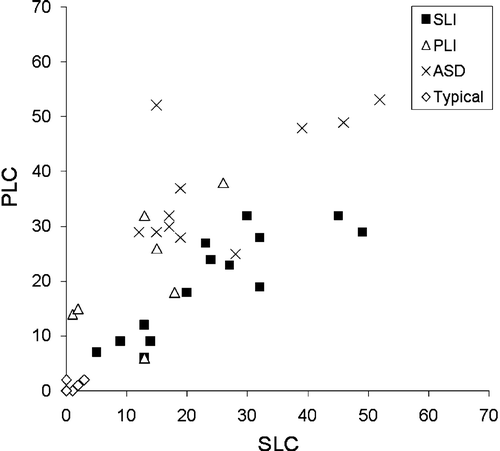Figures & data
Table 1. Mean (standard deviation) age and age range of participants at initial testing (T1) and at follow‐up (T2). Also included is information about which study the participants took part in at T1
Table 2. Mean (standard deviation) performance of the four groups on the battery of cognitive and language tests at follow‐up. Only statistically significant differences are presented
Table 3. Mean performance (standard deviation) of the specific language impairment (SLI), pragmatic language impairment (PLI), autism spectrum disorder (ASD), and typical (T) groups on the battery of literacy tests. Only statistically significant differences are presented
Table 4. Change in linguistic ability over time

